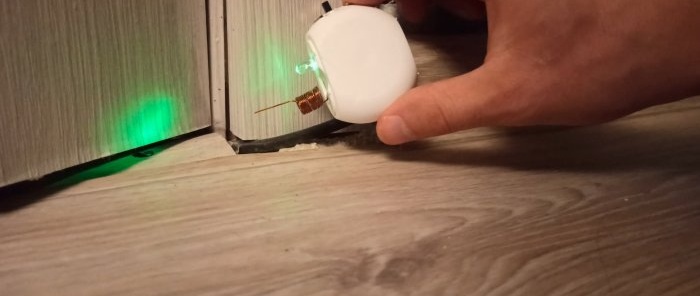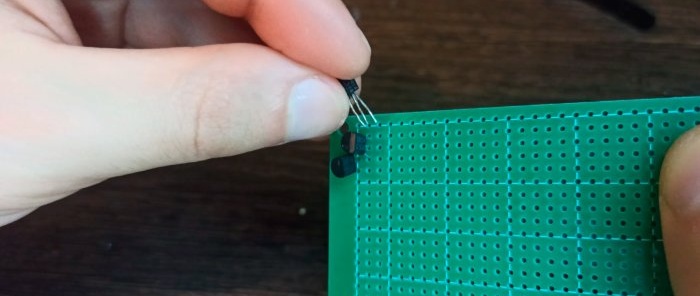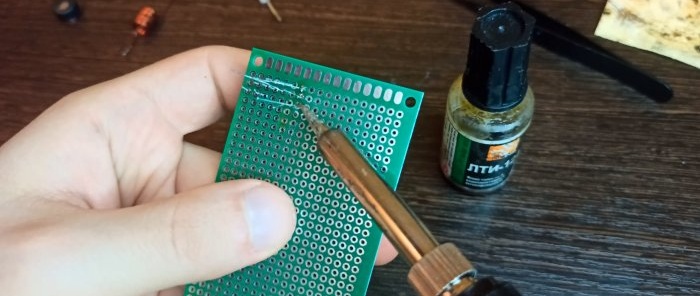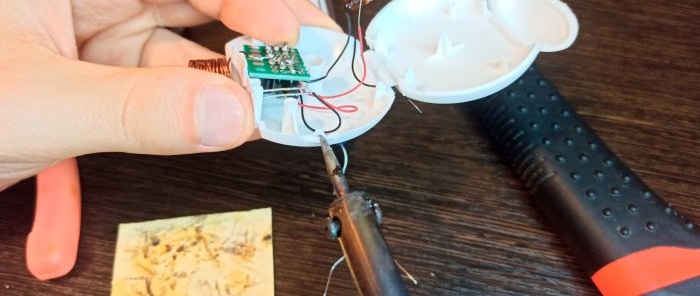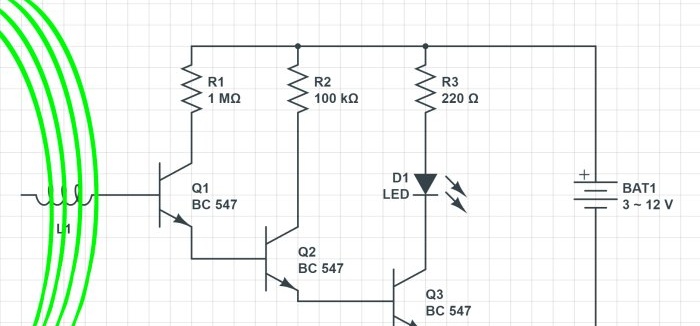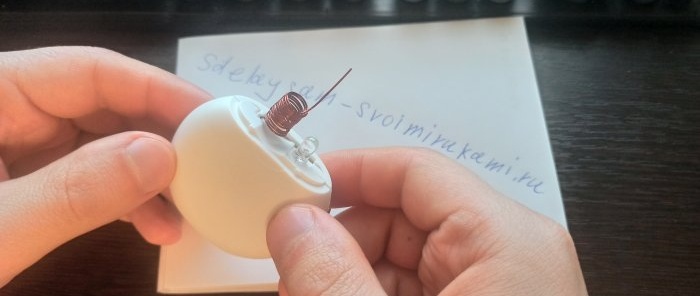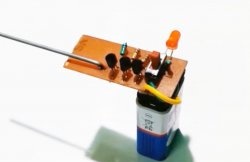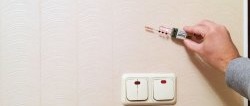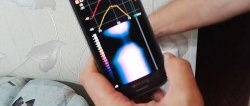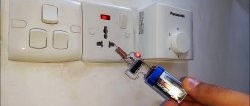When renovating an apartment, sometimes you can find an interesting surprise from the previous owner or builders in the form of a wire sticking out of the wall. Where does this unknown cable come from and where does it go? Is this wire live now or not? It may well turn out that this is the neighbors' wiring. It is not always possible to find the truth by dismantling everything around the wire.
In this case, an easy option is presented: here you can dismantle the threshold and baseboard.
Details
A hidden wiring detector, which can be easily made from the following parts, will help solve a more complex problem:
- Resistors: 1 MΩ, 100 kΩ and 220 Ω.
- Transistor BC 547 – 3 pcs..
- Light-emitting diode.
- Bread board.
- Enameled wire.
Hidden wiring detector circuit
The circuit of the device is quite simple: it consists of three resistors of 1 MOhm, 100 kOhm and 220 Ohm (circled in red), three NPN transistors BC 547 (Actually, any NPN transistors will do) one LED, one coil of 10-15 turns and batteries from 3 to 12 volts.
In reality, this diagram looks like this:
By the way, if BC 547 transistors are not available, then they can be replaced with any NPN transistors.
Making the detector
We place our components on the breadboard.
We treat the contacts with rosin and solder the pads.
We wind ordinary enameled wire around a pencil in the form of a coil, and then solder it to our circuit. Then we bend the contacts of the resistors to the side so that they form tracks.
We solder the parts to the tracks, and then bite off all the excess. Now we prepare the wiring for LED and batteries: clean, tin (cover with a thin layer of solder).
Then we saw off the excess with a hacksaw and the homemade product begins to take on an aesthetic appearance. Adding the finishing touches in the form of a switch. As it turned out, the dental floss housing is ideal for our household hidden wiring detector.
How it works?
An electromagnetic field arises around any conductor through which electric current flows.
When we place the coil inside this field, it begins to store energy until there is enough energy to turn on transistor Q1.
As soon as transistor Q1 turns on, electric current flows through it to the base of transistor Q2.
From which Q2 also opens and passes current to the base of transistor Q3.
Q3, in turn, repeats the action of its predecessors, also passing electric current through itself, as a result of which it lights up Light-emitting diode, signaling to us about the presence of electric current in the object under study.Now we check the operation of the hidden wiring detector on the above-mentioned wire sticking out of the baseboard.
And he found himself under tension:
In this simple and interesting way you can find out if there is a danger in the cable, protect yourself and successfully complete the repair.
Watch the video
Very interesting article: Detector of hidden wiring from a smartphone
